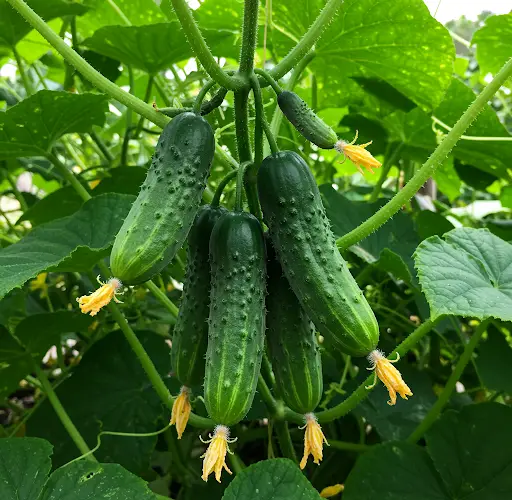Cucumbers are a favorite vegetable for salads and are widely grown in gardens. They are easy to cultivate, but they require special attention when it comes to watering and feeding. The plant has shallow roots compared to tomatoes, which means it needs frequent watering to thrive. In addition to regular watering, cucumbers also require high-quality feeding in order to grow well and produce an abundant yield. Natural fertilizers provide excellent nutrients without the use of chemicals, ensuring healthy and organic growth.
Now, I will share with you what has proven to be the best natural fertilizer for cucumbers in my experience. This fertilizer not only boosts cucumber growth but can also be beneficial for tomatoes and other garden plants. The secret lies in a simple but powerful combination of milk and yeast, two ingredients that are commonly found in every household. When used correctly, this mixture encourages vigorous plant growth, improves resistance to diseases, and enhances fruit production.
To make this nutrient-rich solution, you need only two ingredients: milk and yeast. Start by pouring 1 liter of warm milk into a jug. It is best to use raw cow’s milk if available, as it contains the highest level of beneficial nutrients, but store-bought milk can also be used as an alternative. Then, add 1 sachet of dry yeast to the milk. Stir the mixture well until the yeast completely dissolves. This step is crucial, as it ensures even distribution of nutrients throughout the solution.
Once the milk and yeast are fully mixed, pour the solution into a bucket containing approximately 10 liters of water. Stir thoroughly to combine everything. This nutrient-rich mixture is now ready to be used as a natural fertilizer for cucumbers and tomatoes. Apply this fertilizer to your plants every two weeks to maintain steady and healthy growth.
If you prefer to use only milk without yeast, dilute it with water in a 1:1 ratio before applying it to the plants. This will still provide essential nutrients to the soil, though the yeast enhances the benefits significantly. Regardless of which variation you choose, regular fertilization every two weeks is recommended for the best results.
Have you ever used a milk and yeast fertilizer for your plants? If so, what were your experiences? Let us know where you are from and how this method has worked for you. Many gardeners have reported that after watering their cucumber plants with this solution, they observed a noticeable increase in plant size within just a few days. The leaves became greener and healthier, and the plants began to bloom more abundantly. As a result, they soon had homegrown cucumbers ready for fresh salads.
The same results were seen with tomatoes. They started growing intensively, producing more flowers and showing promising signs of a bountiful harvest. This natural fertilizer not only stimulates plant growth but also strengthens their immunity, making them more resilient to pests and diseases.
Milk contains a wealth of beneficial nutrients, including amino acids, B-group vitamins, calcium, and phosphorus. These nutrients are essential for optimal plant growth and development. Calcium, in particular, is crucial for preventing issues like blossom-end rot, a common problem in cucumbers and tomatoes. Phosphorus plays a vital role in energy transfer and root development, ensuring plants receive adequate nutrients from the soil.
In addition to providing essential nutrients, milk also helps plants fight against diseases and pests. The natural antibacterial and antifungal properties of milk help to disinfect the soil, reducing the risk of fungal infections. It is known that many garden pests, such as aphids and mites, cannot digest lactose from milk, making this an effective natural pest deterrent. By incorporating milk into your gardening routine, you can protect your plants without the need for chemical pesticides.
Yeast, on the other hand, contains beneficial fungi that promote strong root development and overall plant vitality. The microorganisms in yeast work to enhance soil structure, improve water retention, and support beneficial bacteria. These factors contribute to healthier and more robust plants that are better equipped to handle environmental stressors.
For best results, always use fresh ingredients when preparing this natural fertilizer. If possible, opt for raw, unprocessed milk to maximize the nutritional benefits. Additionally, ensure that your plants receive adequate sunlight and proper spacing to promote healthy airflow, which further reduces the risk of diseases.
By incorporating this simple yet effective milk and yeast fertilizer into your gardening routine, you can significantly enhance the growth and yield of your cucumbers and tomatoes. This method not only fosters healthy plants but also promotes sustainable gardening practices by using natural, readily available ingredients.
Try this technique in your own garden and observe the difference it makes. With consistent application, you will enjoy an abundant harvest of fresh, flavorful cucumbers and tomatoes, perfect for summer salads and home-cooked meals. Gardening is all about experimenting and finding what works best for your plants, and this natural fertilizer is a great step toward healthier, more productive crops.



